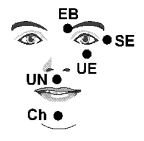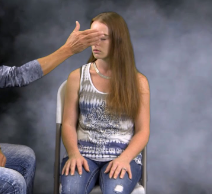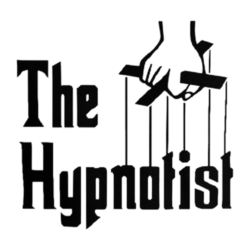
Emotional Freedom Technique Works Best On Phobia And Fear
Emotional Freedom Technique (EFT) combines cognitive therapy and acupressure to effectively alleviate phobias and fears. This holistic method targets energy imbalances within the body and neural pathways, engaging deeply with emotional roots of fear.

The tapping process on acupressure points acknowledges emotions, releases tension and facilitates balance, significantly reducing fear intensity. Used alongside other therapies, EFT enhances overall treatment effectiveness. Success stories showcase EFT’s transformative impact on phobias, attesting to its practical and empathetic approach. Gain further insight into how EFT might work best for you by proceeding with the next phase of exploration.
Understanding Emotional Freedom Technique
 In order to fully comprehend the potency of Emotional Freedom Technique (EFT), it’s essential to understand that this unique approach combines cognitive therapy and acupressure. Focusing on specific acupressure points to balance the body’s energy system, EFT alleviates emotional distress, specifically phobias and fears that can be debilitating for many.
In order to fully comprehend the potency of Emotional Freedom Technique (EFT), it’s essential to understand that this unique approach combines cognitive therapy and acupressure. Focusing on specific acupressure points to balance the body’s energy system, EFT alleviates emotional distress, specifically phobias and fears that can be debilitating for many.
EFT operates under the premise that emotional distress results from an imbalance in the human body’s energy system. EFT, therefore, targets these imbalances through a systematic method of tapping on specific acupressure points while focusing on the fear or phobia. This approach not only addresses the surface symptoms of fear but also delves into the underlying emotional causes.
Benefits of EFT extend beyond immediate relief. Research indicates that EFT provides long-term benefits by rewiring neural pathways associated with the fear response, resulting in decreased anxiety and improved emotional well-being. This non-invasive technique offers an avenue for rapid emotional healing and freedom from the shackles of fear. It’s a gentle, yet powerful tool that puts control back into the hands of the individual, fostering resilience and emotional balance.
EFTs Core Principles
Having explored the basic understanding of Emotional Freedom Technique, we now turn our attention to its core principles which lay the foundation for its effectiveness in resolving phobias and fears.
- The first principle revolves around the technique of tapping. This is a literal tapping on specific acupressure points on the body, which is believed to balance the energy flow and reduce emotional distress.
- The second principle is the restoration of energy balance. EFT operates on the premise that negative emotions disrupt the energy balance of the body. By tapping on certain points, this balance is restored, leading to a decrease in fear and anxiety symptoms.
- The third principle combines cognitive therapy with the physical technique of tapping. As individuals tap on specific points while focusing on their fear or phobia, they are essentially applying a form of cognitive therapy. This process allows individuals to confront their fears in a controlled and safe manner, leading to a reduction in the intensity of the fear over time.
These core principles highlight how EFT serves not only as a physical but also a psychological method for tackling fears and phobias, offering a pragmatic and empathetic approach to achieving emotional freedom.
Phobias: Impact and Management
 Phobias, those intense, often irrational fears that can evoke physical symptoms such as a rapid heartbeat and sweating, can significantly impact an individual’s daily life and overall well-being. These specific phobias can invoke an overpowering sense of dread, causing the person to go at great lengths to avoid the feared object or situation.
Phobias, those intense, often irrational fears that can evoke physical symptoms such as a rapid heartbeat and sweating, can significantly impact an individual’s daily life and overall well-being. These specific phobias can invoke an overpowering sense of dread, causing the person to go at great lengths to avoid the feared object or situation.
Addressing phobias is crucial to mitigate their deleterious effects. Traditional methods often involve exposure therapy or medication. However, these methods can be daunting or carry unwanted side effects. This is where EFT interventions can play a pivotal role.
EFT, or Emotional Freedom Technique, involves tapping on specific acupressure points while mentally confronting the fear. This technique encourages individuals to deeply and completely accept themselves, including their fears and anxieties. By so doing, it can help neutralize the emotional impact of the fear, thereby reducing its influence.
While it may seem simplistic, numerous studies have confirmed the efficacy of EFT in managing specific phobias. It has emerged as a promising, non-invasive approach to fear and phobia management. Its efficacy underscores the importance of addressing the emotional aspects of phobias, thus offering a fresh perspective in their management.
EFTs Role in Phobia Treatment
 Addressing the pivotal role of Emotional Freedom Technique in phobia treatment, it’s crucial to understand how this method targets the emotional roots of fear, offering a holistic approach to managing debilitating phobias. EFT techniques work by harmonizing the body’s energy, addressing not just the symptoms, but the root cause of the fear.
Addressing the pivotal role of Emotional Freedom Technique in phobia treatment, it’s crucial to understand how this method targets the emotional roots of fear, offering a holistic approach to managing debilitating phobias. EFT techniques work by harmonizing the body’s energy, addressing not just the symptoms, but the root cause of the fear.
- EFT techniques balance the body’s energy system: By tapping on specific meridian points, the energy flow within the body is balanced, reducing the intensity of fear and anxiety associated with phobias.
- EFT improves emotional well-being: Research has shown that EFT not only decreases fear and anxiety but also significantly enhances emotional well-being. This offers individuals long-term emotional freedom from their phobias.
- EFT is part of an integrative approach to phobia treatment: EFT therapists often integrate talk therapy with EFT techniques, providing a comprehensive treatment plan that addresses both the emotional and cognitive aspects of phobias.
Process of EFT for Phobias
Understanding the process of EFT for phobias allows us to see how this technique actively engages with the emotional roots of fear, stimulating certain acupressure points in the body while the individual concentrates on their specific fear or phobia.
This tapping process is simple yet profound, designed to directly interact with the emotions associated with the phobia or fear. It aids in bringing these emotions to the surface, providing an opportunity for the individual to acknowledge and confront them in a safe and controlled environment.
The release of the emotional tension is facilitated by tapping on specific acupressure points. These points, located on the body’s meridian lines, are believed to be channels for energy flow. By stimulating these points, EFT aims to balance this energy, creating a sense of calm and relaxation.
The practicality of EFT lies in its accessibility and the immediate relief it can provide. It is a tool that can be used independently or in conjunction with other therapies for enhanced effect. The overall goal is to enable individuals to regain control over their emotional responses, thus liberating them from the grips of their phobias and fears.
Benefits of Utilizing EFT
 The application of Emotional Freedom Technique (EFT) brings forth a multitude of benefits, most notably its capacity to release emotional blockages and diminish the intensity of fear. The method works by tapping on specific meridian points on the body, a sequence that helps balance energy flow, thus reducing fear and anxiety levels.
The application of Emotional Freedom Technique (EFT) brings forth a multitude of benefits, most notably its capacity to release emotional blockages and diminish the intensity of fear. The method works by tapping on specific meridian points on the body, a sequence that helps balance energy flow, thus reducing fear and anxiety levels.
Here are three key benefits of using EFT:
- Releasing Emotional Blockages: Using EFT helps to release emotional blockages, which are often the root cause of phobias and intense fear. This release can lead to a significant decrease in the intensity of fear, providing relief and increased emotional control.
- Reducing Physical Sensations: The tapping sequence used in EFT can alleviate physical sensations associated with fear, such as rapid heartbeat or shortness of breath. This can lead to a more relaxed state, making it easier to confront and manage fear.
- Accessibility and Convenience: EFT is a non-invasive technique that can be done anywhere, anytime. This flexibility makes it a practical tool for individuals seeking to manage their fear and anxiety on a day-to-day basis.
EFT Integration Into Therapy
Incorporating Emotional Freedom Technique into therapeutic practices signifies a comprehensive and effective approach to managing and overcoming phobias and fears. By coupling EFT with other therapeutic approaches like cognitive behavior therapy, it enhances treatment effectiveness, thus providing a path to emotional freedom. EFT integration is a testament to its flexibility and adaptability, offering a pragmatic approach to dealing with emotional distress.
The process of EFT integration involves tapping on specific meridian points while focusing on the fear or phobia. This combination of physical and mental activity can help balance the body’s energy flow, reducing the intensity of fear. This method is empathetic in its approach, acknowledging the individual’s emotional distress while providing relief.
The effectiveness of EFT integrated with other therapeutic methods is evident from numerous success stories and case studies. It demonstrates that EFT isn’t just a standalone technique, but a valuable tool that can be integrated with other therapies for a more holistic treatment. This method provides a substantial foundation for individuals to manage their phobias and achieve emotional freedom.
Working With EFT Therapists
Navigating the labyrinth of phobias and fears becomes a significantly less daunting task with the guidance of trained EFT therapists, who create a sanctuary for emotional exploration and technique application. These therapists provide the much-needed expertise and guidance, employing specific techniques to address personal emotional blocks.
EFT therapists work meticulously to identify and release emotional blocks tied to phobias. This is accomplished through a comprehensive treatment plan that incorporates specific EFT techniques, honed by specialized training and experience.
The expertise and guidance of EFT therapists offer a structured approach to fear and phobia management. By creating a safe space, they cultivate trust and openness, essential for effective treatment.
The holistic approach employed by EFT therapists combines talk therapy with tapping interventions. This blend of techniques complements one another, enhancing the overall effectiveness of the therapy.
Complementary Therapeutic Approaches
 Harnessing the power of other therapeutic methods alongside EFT can augment the effectiveness of treatment outcomes for phobias and fears. Complementary therapeutic approaches, when integrated with EFT, create a more comprehensive and personalized treatment plan.
Harnessing the power of other therapeutic methods alongside EFT can augment the effectiveness of treatment outcomes for phobias and fears. Complementary therapeutic approaches, when integrated with EFT, create a more comprehensive and personalized treatment plan.
One such approach is combining EFT with cognitive-behavioral therapy (CBT). This pairing has shown to enhance treatment outcomes, as CBT’s analytical exploration of thoughts and behaviors is enriched by EFT’s focus on emotional and physiological responses.
Another effective method is integrating exposure therapy with EFT. This combination allows individuals to confront their fears in a structured and supportive manner while using EFT to manage their emotional reactions.
Incorporating mindfulness-based interventions alongside EFT can foster emotional regulation and resilience. By promoting an awareness of the present moment, mindfulness aids in dampening the intensity of fear responses.
Lastly, EFT with relaxation techniques, such as deep breathing, can synergistically reduce anxiety. The relaxation techniques induce a calming effect, while EFT works to balance the body’s energy flow, thereby reducing fear responses.
EFT Success Stories
Numerous success stories attest to the remarkable effectiveness of EFT in significantly reducing anxiety levels and helping individuals overcome their phobias. These success stories highlight not only the significant reductions in fear and anxiety but also the empowering experience that EFT provides.
- One success story involves a woman who had a severe phobia of driving. After several EFT sessions, she reported a substantial decrease in her fear, eventually gaining the confidence to drive on her own.
- Another success story is of a man who had a debilitating fear of heights. EFT sessions helped him confront his fear in a controlled and empowering way, leading to lasting relief.
- A third example is a case of a woman with an intense fear of spiders. After using EFT techniques, she was able to face and eventually overcome her fear.
The commonality in these success stories is the transformative impact of EFT. The technique not only leads to significant reductions in anxiety and fear but also fosters a sense of empowerment, enabling individuals to face and overcome their phobias. These stories are a testament to the potential of EFT as a tool for bringing about emotional freedom and well-being.
Frequently Asked Questions
Does EFT Work for Phobias?
Yes, the Emotional Freedom Technique (EFT) can be effective for treating phobias. EFT involves tapping on specific meridian points to balance energy flow and reduce fear intensity. It targets the emotional causes of fear responses, stimulates energy meridians, and rewires neural pathways.
What Does Emotional Freedom Technique Help With?
The Emotional Freedom Technique (EFT) is a holistic healing method that addresses a range of emotional and physical issues. By tapping on specific energy meridian points, EFT helps balance energy flow, reduce negative emotions and physical discomfort.
Besides fear and phobias, it is effective in managing stress, anxiety, pain and addiction. It also aids in enhancing performance, self-esteem and overall emotional well-being, making it a versatile tool in therapy and personal development.
Which Therapy Is Used for Treating Phobia?
The Emotional Freedom Technique (EFT) is a recognized therapy for treating phobias. It combines acupressure and cognitive therapy to target the emotional causes of fear responses.
By stimulating specific energy meridians, EFT has been shown to reduce anxiety and fear, thereby improving emotional well-being.
EFT therapists are trained to provide a safe space for clients to explore and release emotional blocks, making it a highly effective approach for phobia treatment.
What Are the Coping Mechanisms for Phobias?
Coping mechanisms for phobias vary, but often include a blend of therapeutic interventions. One method, the Emotional Freedom Technique, employs tapping on specific acupressure points while concentrating on the phobia. This approach aims to address the emotional roots of fear responses, essentially rewiring neural pathways to effectively reduce phobias.
Research shows that integrating EFT with other therapies, such as Cognitive Behavioral Therapy, can enhance overall treatment effectiveness.
Let’s Get Started. Book an Appointment

Do not be afraid to reach out to me, Mark E Wilkins, to assist you in any issues you might have. Most Hypnotherapy sessions last 2 hours and EFT Sessions are usually handled with one session. Life Coaching is 45 minute session, once a week. Self-Hypnosis is taught in one session, and lasts a lifetime.
To make an appointment, first listen to the Pre-talk and fill out he Complementary Healthcare Provider Disclosure. The use the Contact Form to request an appointment with the Bohol Hypnosis Expert.
Self-help downloads are available. The self hypnosis program to teach you how to self-hypnotize is here.
Conclusion
In summation, the Emotional Freedom Technique presents a pragmatic, empathetic, and efficacious approach to managing phobias. By harmonizing the body’s energy points, it addresses fear directly, fostering emotional regulation.
Integrating EFT into therapy can offer patients a self-empowering tool, complementing other therapeutic strategies. The technique’s success stories underscore its potential, suggesting that EFT may be a valuable asset in the psychological and emotional therapy toolbox for phobia treatment.





